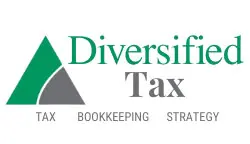3 Tax Buckets You Need to Know About
3 Tax Buckets You Need to Know About
The government does not treat all accounts the same way when it comes to taxation, which is important to consider when you’re planning out your finances both now and in the future. Your accounts may be taxed in several ways:
- Taxable accounts are accounts where you contribute that money without a tax deduction and any income that you make on that account is subject to capital gains tax each year – and when you sell off the investment, you’re taxed on the gain, not the originally invested amount.
- Tax-deferred accounts are accounts where you invest your money and receive a tax deduction (an example would be your 401(k) plan where you make a pre-tax contribution) and your money grows tax-free, but then you’re taxed on that money at ordinary income tax rates when you eventually withdraw it.
- Tax-free accounts are accounts such as a Roth IRA, where you’ve already paid tax on the money that you’re investing, and you can allow that investment to grow tax-free, and then withdraw that money without paying taxes on it.
Taxable Accounts
When we refer to taxable accounts, we mean accounts where you’re not getting a deduction when you make the contribution. Any investment that you generate within that account each year is subject to capital gains tax, and if you sell the investment, you’ll owe tax on the gain but not the initial invested amount. Capital gain tax rates can vary based on where you live, and in some areas of the country, they can be quite high.
What types of accounts fall into taxable accounts? Your savings account or CD (certificate of deposit) account at your bank are both examples of taxable accounts. Brokerage accounts and living trusts are also taxable accounts. If you’re self-investing in any stock trading apps or crypto apps, these are also taxable accounts. Any traditional custodian where you might hold an account, such as Fidelity or Vanguard, is also a taxable account.
Tax-Deferred Accounts
When you make a contribution to a tax-deferred account, you receive a tax deduction, so tax-deferred accounts are one way to lower your tax bill in the present. The investment will grow tax-free, but when you go to withdraw your money, you will owe tax.
The most common example of a tax-deferred account is your 401(k). You likely make contributions directly from your paycheck, which lowers your taxable income as the contribution is made pre-tax. The money that you contribute will grow throughout the years that you’re saving, and once you hit retirement you will owe tax on the amount that you withdraw each time.
IRAs, or individual retirement accounts, are also tax-deferred accounts. A 403(b) account is another example of this type of account. Keep in mind that, in the case of IRAs, you’re required to take minimum distributions (RMDs) at age 72.
Tax-Free Accounts
In a tax-free account, you’ve already paid tax on the money that you deposit into the account, so it can grow tax-free and also be withdrawn tax-free. Since these are after-tax dollars, they’re ideal for planning purposes. Examples of tax-free accounts include a Roth IRA, which does have specific conditions in order to contribute, and certain life insurance policies.
Which tax bucket is right for you?
Tax planning goes hand in hand with financial planning, and for both, it helps to have a professional with experience helping you. A financial planner can help you determine your goals for retirement and beyond, and then determine how much you’ll need to contribute to each “tax bucket” for your future. Even better, if your financial planner can work with your tax preparer, they’ll have a better idea of what tax bracket you currently fall into so that they can work together to appropriately strategize for your future.
Sign up for tax tips delivered to your inbox:




